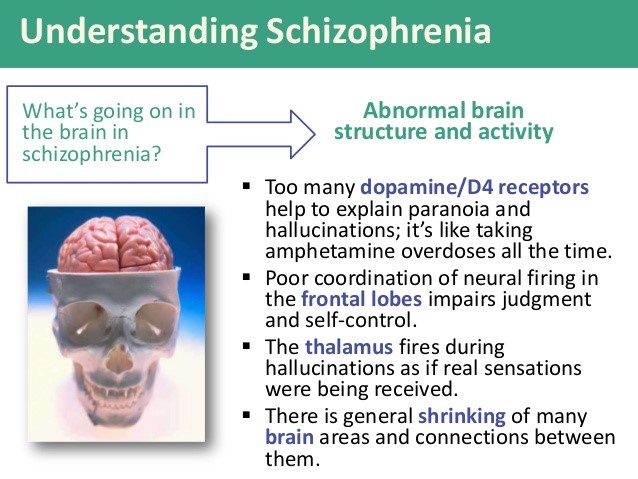Chapter 13: Psychiatric Disorders
In this Chapter
Schizophrenia
1Marked by disturbances in thinking, cognition, emotional reactions, and social behavior, schizophrenia usually results in chronic illness and personality change. Delusions, hallucinations, and thought disorder are common, as are disturbances in attention, memory, and complex thinking. Affecting about 1.1 percent of the population, or 2.4 million Americans, schizophrenia is disabling and costly. Annual costs total about $62.7 billion.
2Schizophrenia leads to changes that may be caused by the disruption of neurodevelopment through a genetic predisposition, which may be exacerbated by environmental factors such as maternal infections or direct brain trauma. Brain scans and postmortem studies show abnormalities in some people with schizophrenia, such as enlarged ventricles (fluid-filled spaces) and reduced size of certain brain regions. Functional neuroimaging scans such as PET and functional magnetic resonance imaging (fMRI) taken while individuals perform cognitive tasks, particularly those involving memory and attention, show abnormal functioning in specific brain areas of people with this illness. Brain systems using the chemicals dopamine, glutamate, and GABA appear to be particularly involved in the development of the disorder. Recently, mutations in several genes involved in controlling nerve cell communication have been identified that appear to increase the risk of developing schizophrenia.

3The disorder usually is diagnosed between the ages of 15 and 25. Few patients recover fully following treatment, and most continue to have moderate or severe symptoms that may be aggravated by life stressors. About 15 percent of individuals return to a productive life after a single episode, 60 percent will have intermittent episodes throughout their lives, and an additional 25 percent will not recover their ability to live as independent adults. Deficits in cognition are frequent, lifelong manifestations in most patients, even those who show good recovery from more acute “positive” symptoms, such as hallucinations, delusions, and confused thinking. “Negative” symptoms, such as inability to experience pleasure and lack of motivation, may be the most debilitating part of the disorder. These symptoms make it difficult for many people to lead productive lives. Unfortunately, many of these symptoms are generally resistant to drug treatment.
4The first antipsychotic drug, chlorpromazine, was discovered by accident in the 1950s and shown to reduce symptoms of schizophrenia. Clinical trials demonstrated that chlorpromazine was more effective than a placebo or a sedative. Subsequently, more than 20 effective antipsychotic drugs were developed. The first generation of antipsychotic drugs acts by inhibiting certain dopamine receptors. This mechanism accounts for the high prevalence of side effects, similar to those seen with Parkinson’s, that are associated with the use of first-generation antipsychotics. The mechanism also explains the risk of developing an irreversible movement disorder, tardive dyskinesia, which results in aimless, uncontrollable movements, such as grimacing or rapid eye blinking.
5The second generation of antipsychotic medications were developed to be more effective in treating the positive symptoms of schizophrenia. They do not have the same likelihood of causing Parkinsonian effects but can lead to other debilitating side effects, such as very large weight gain, blood disorders, and muscle pain and dysfunction. As a result of problems with both generations of antipsychotic medications, safer drugs with fewer side effects are currently being sought.